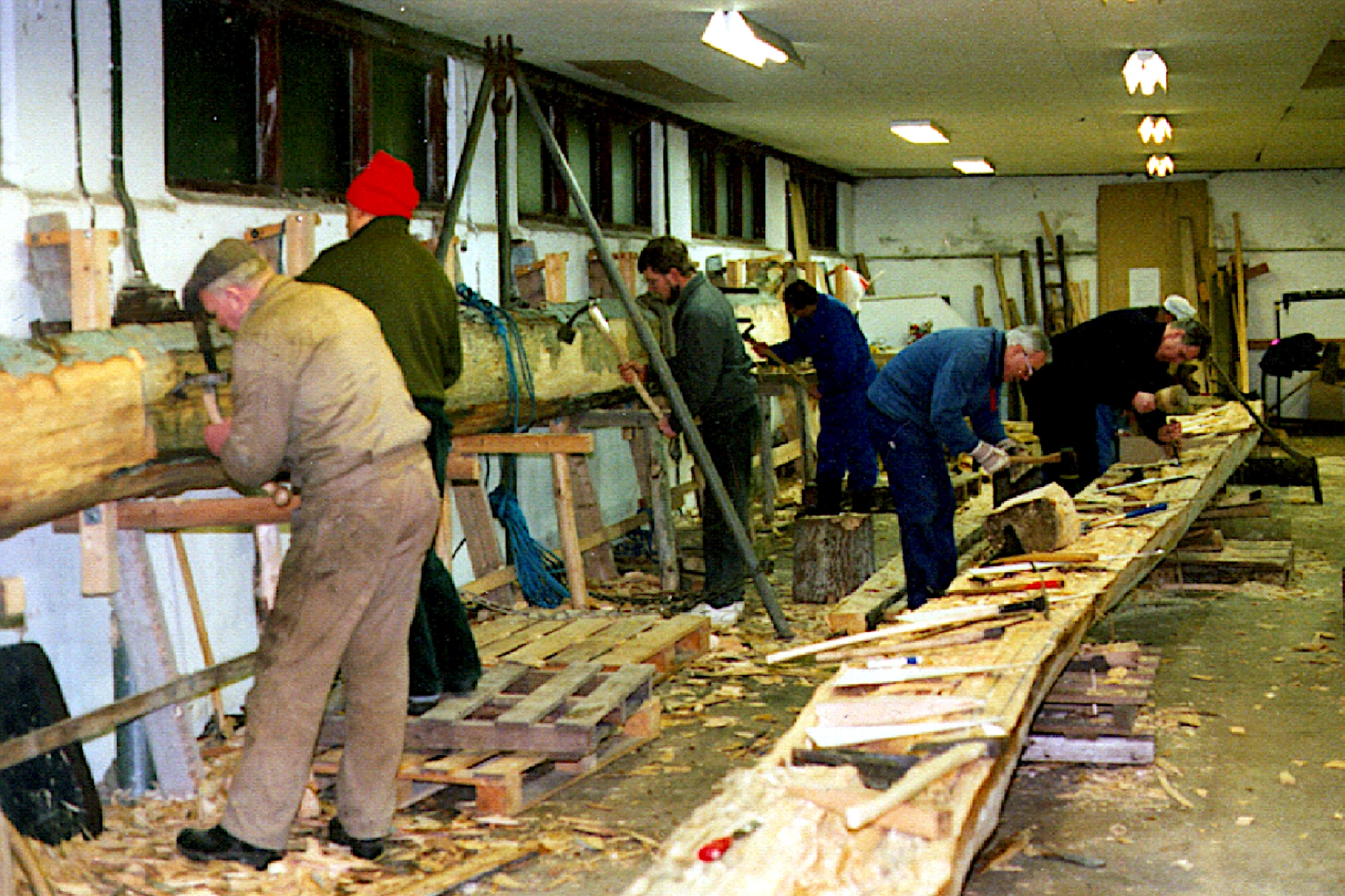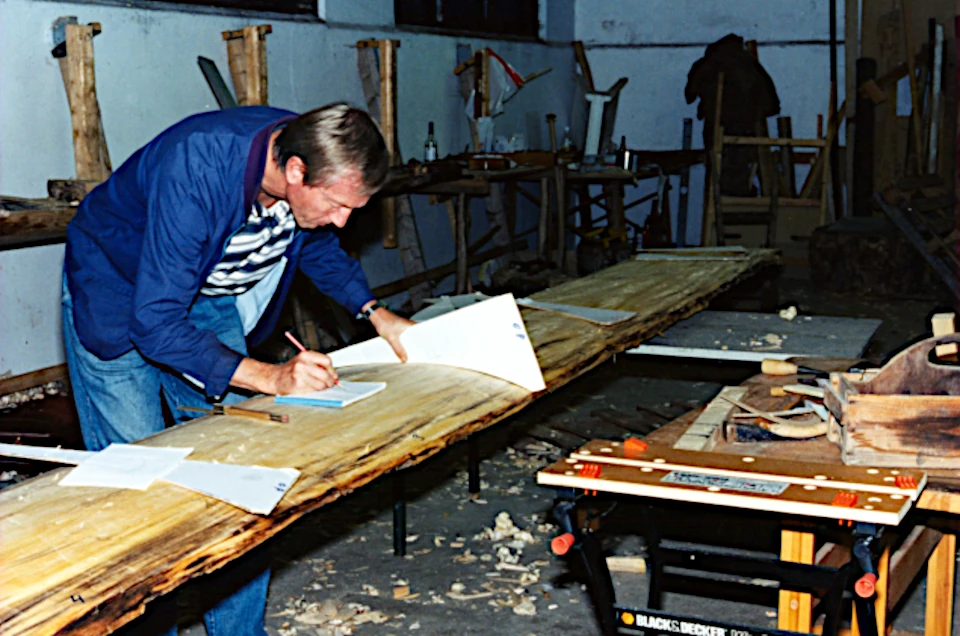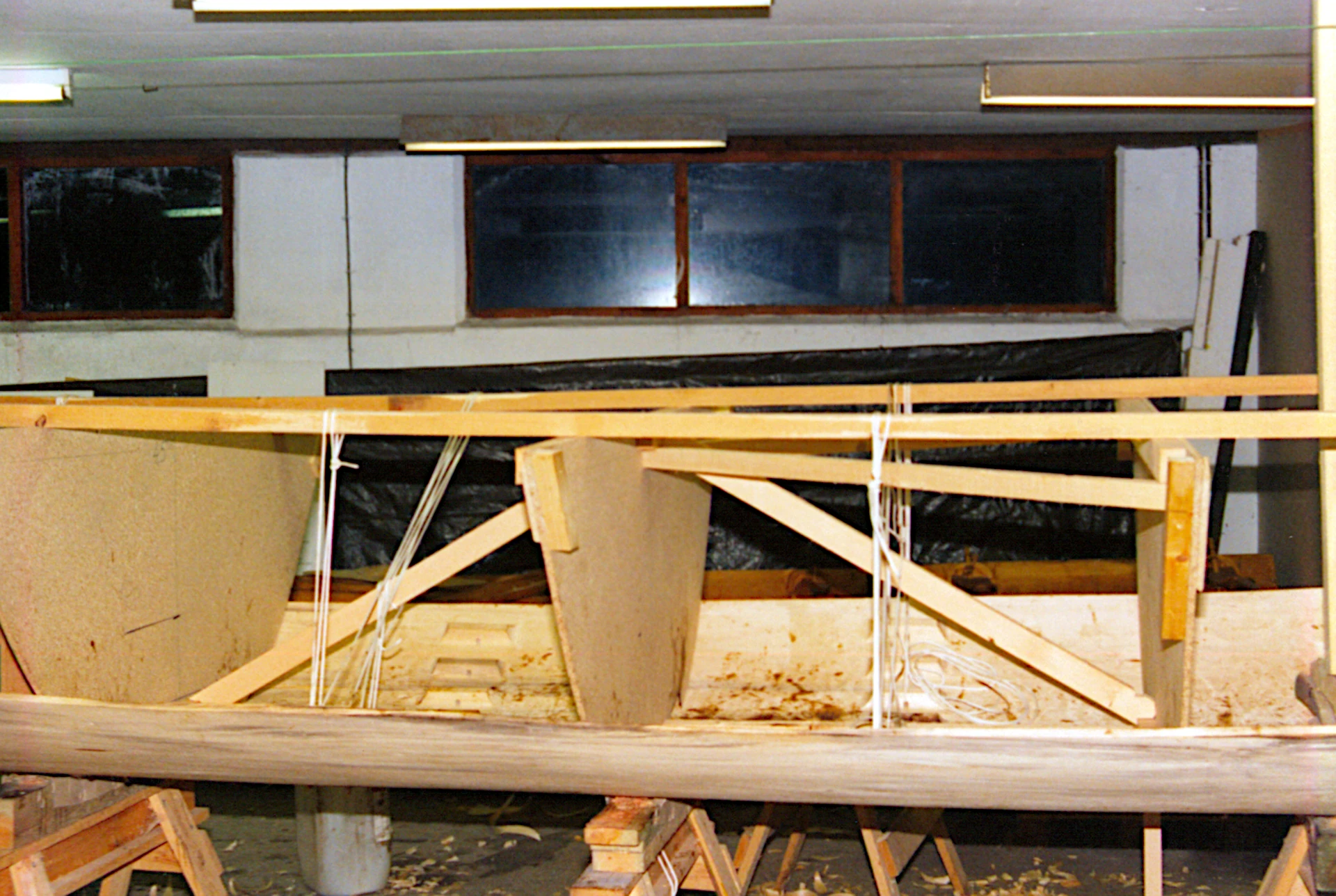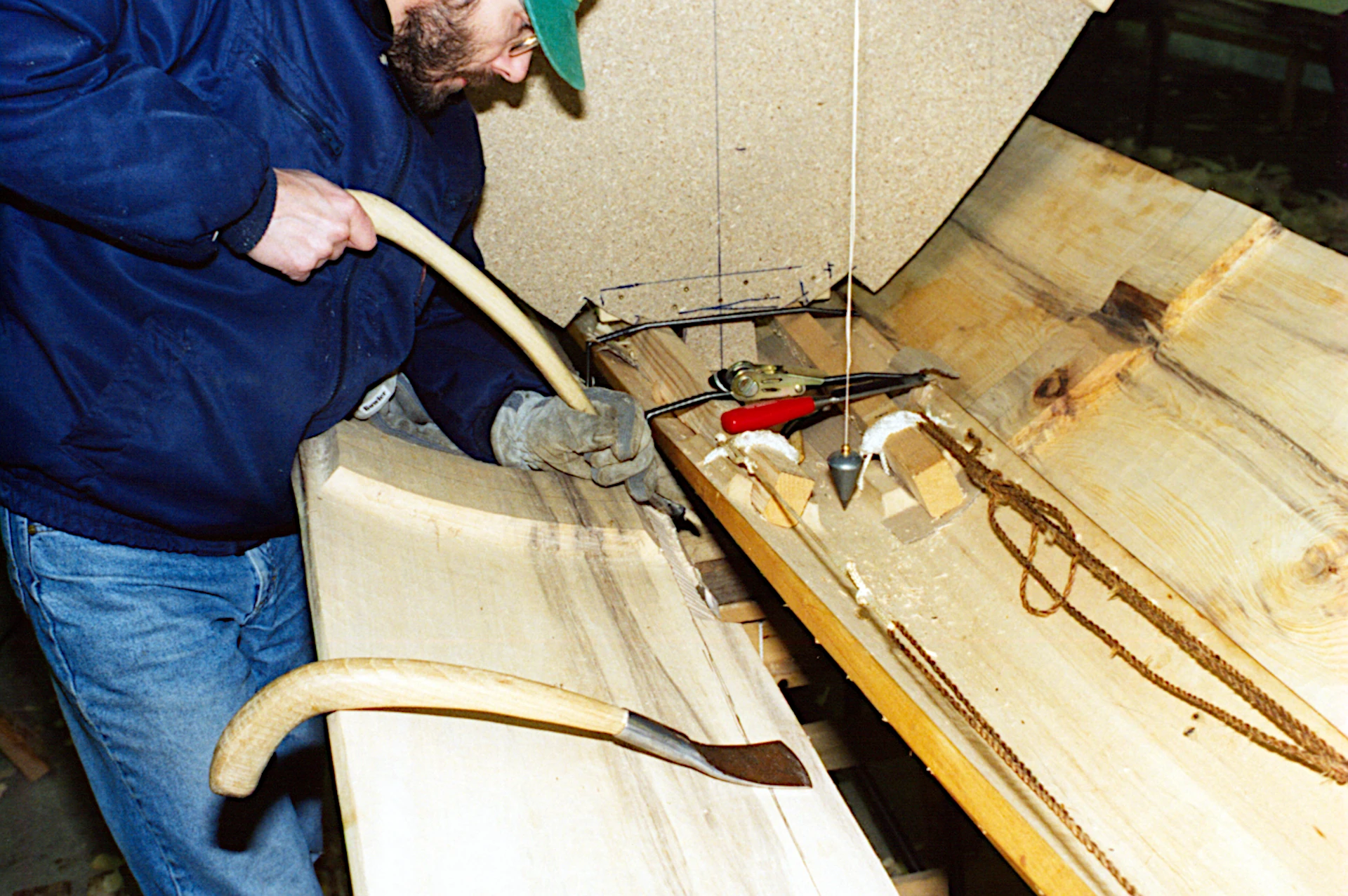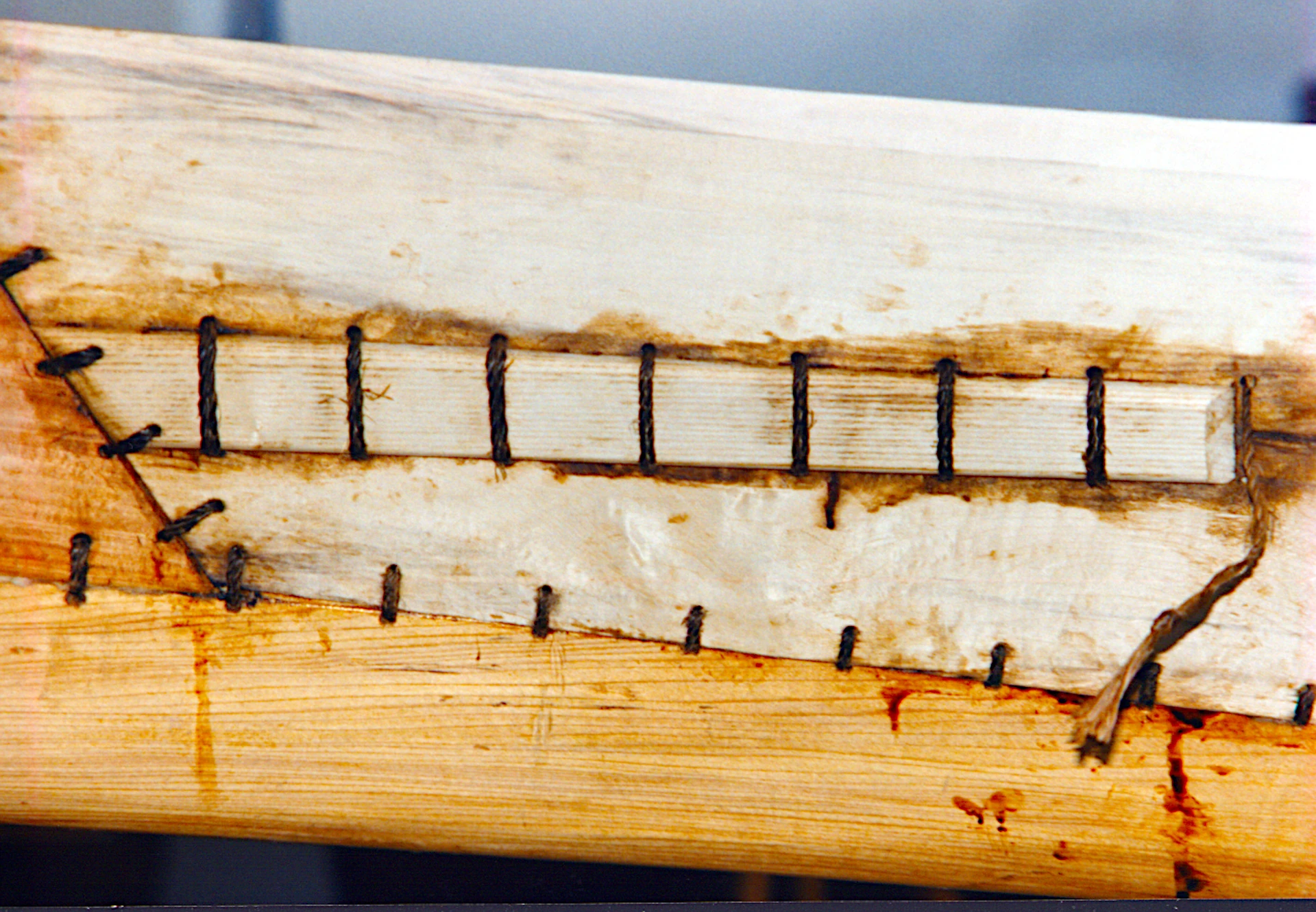Planks
The next log was picked up in Dyvig. It was split outside the shipyard and the two halves were dragged into the hall. It turned out that the 20 cm diameter heartwood did not fit with the other wood. This meant that the side planks had to be laid further down the trunk, which reduced the width. We could not achieve the width indicated in Johannessen's drawings. It was decided to cut the side planks to the width they could get and possibly increase the width of the stringer planks if necessary.
It turned out that the root end could provide an acceptable width, while the planks would become increasingly narrow towards the top end. It was decided to leave the wide end of the side planks facing forwards. The trunks were orientated with the split side down, the bark was peeled off the trunk halves and a series of transverse notches, 10-15 cm deep, were cut into the trunk at a distance of approximately 1 m. The wood between the notches was then removed by splitting.
The outside of the side planks were cut to final shape. According to the construction team's templates, the side planks were to be cut slightly curved in a transverse direction over the middle 6 metres.
After the outer sides of the side planks were smoothed, they were turned over and the inner side was processed. To determine and mark the exact position of the cleats, the planks were temporarily placed on the boat.
The bottom edge of the side planks was chosen to have a wall thickness of 2 cm, while their top edge was given a wall thickness of 1.5 cm.
It turned out that the top end of both planks had some cracks that were caused by the felling. The tree had fallen so badly during felling that the top splintered. The finished side planks weighed 56 kg each.
Mounting side planks
Before assembly, the bow of the keel line had to be decided, a decision that would determine the shape of the entire boat. At the same time, we had to ensure that the boat was symmetrical about the longitudinal centre plane. A string was suspended over the line that would be the longitudinal centre of the boat. A series of plumb lines (3 pieces) were attached to this.
The bottom plank, which was very flexible, was blocked up and clamped to the ground so that the keel arch had an arrow height of 37 cm, calculated over the distance between the two inner locking boards.
Using our computer data, the transverse profiles were drawn at a scale of 1:1, this time not for each frame, but at the centre point between the individual frames. These drawings were glued to 10 mm chipboard and profiles were sawn out. These were then mounted on the bottom plank. This allowed us to shape and mount the side planks and the railing planks so that the boat had the right shape.
This method was obviously not used by our predecessors 2,350 years ago. They probably used a series of rods that were lashed together to create the internal shape. However, we did not feel experienced enough to use such arrangements. We became more and more convinced that the ancient shipbuilders who had built the original Hjortspring boat must have built it in a series of increasingly refined boats. Every detail of the boat suggests this. The boat was probably also built according to the size of the available logs.
In order to achieve a boat shape that best represented the find, we had to deviate from the ancient method in this respect as well.
The side planks were sewn to the bottom plank by first attaching them both amidships and then sewing them both to the bottom plank at the same time, moving forwards and backwards, while the edges were trimmed and the woollen cords were continuously laid in the joint. The sewing holes were sealed by pressing ox tallow into them.
Reparation
As mentioned, the two side planks had some cracks in the aft section. After the installation of the side planks, these cracks were repaired using the same method as in the original boat. These repairs have been interpreted as the boat being old and worn, but they could just as easily be seen as repairs to cracks originally contained in the trunk.
The cracks were stopped with woollen string, saturated with ox hide, and then 6 cm wide strips of ash wood were sewn over the cracks.
After installation, the front and rear rows of cleats were cut on site to ensure they were horizontal.
A new milestone had been passed.




